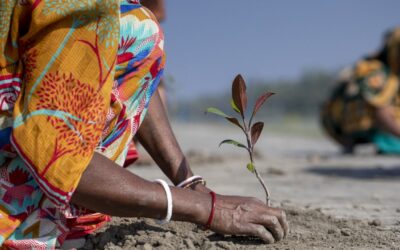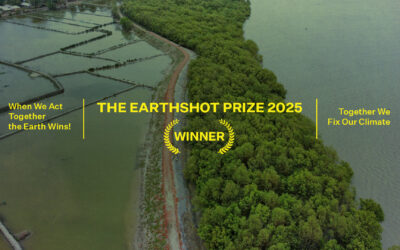by Tahmeed Chaudhury,
December 26, 2022

The 27th conference of the parties, otherwise known as COP27, has recently drawn to a conclusion. The two-week-long summit, held in Sharm-el-Sheikh, Egypt went into overtime before coming to an end on November 20. Leaders from around 190 countries came together to engage in climate negotiations, aiming to capitalise and progress on the Glasgow Climate Pact formed during last year’s conference in Scotland.
As it was during COP26, loss and damage remained the hot topic during this year’s conference as well. The Glasgow pact saw a breakthrough after years of negotiations, where climate-impacted developing countries pushed for a fund where richer, more developed countries will shoulder responsibility for adverse climatic events and pay for the losses and damages incurred. This year, negotiators agreed to take it one step further, by announcing a fund that will address losses and damages to lives, livelihoods, and infrastructure suffered by nations at the forefront of the climate crisis.
Other topics that gained attention include renewed conversations around the 1.5C target, phasing down of fossil fuels, a global adaptation goal, and technical assistance to address loss and damage, to name a few.

KEY OUTCOMES
Loss and damage breakthrough; a new fund to address disaster loss announced
Loss and damage has been a critical talking point in COPs over the years. In the past, developed nations refused to acknowledge the need for a fund. However, leaders, lobbyists, and activists from developing countries have been adamant about the establishment of a loss and damage fund. They argue that least developed countries, including small island nations, have been withstanding the catastrophic consequences – loss of lives, livelihoods and damage to infrastructure – brought about by frequent natural disasters that they believe developed nations are largely responsible for.
The stalemate was eventually broken in COP26 last year when leaders finally recognised the need for a loss and damage fund and agreed to engage in conversations over the matter. This year, in negotiations that went down to the wire, countries reached a historic decision to establish and operationalise a loss and damage fund, particularly for nations most vulnerable to the climate crisis.
However, details on how the finance should be provided and where it should come from are yet to be disclosed. The parties agreed to set up a transitional committee to make recommendations for adoption at COP28, in November 2023. Furthermore, some developed countries, including the US, refused to take responsibility as this might open them up to future litigations from climate-impacted developing countries.

The 1.5C target
One of the key takeaways from COP26 was an agreement to implement the 2015 Paris agreement that aimed to keep the rise in worldwide temperatures “well below 2C”, and pursuing efforts to the keep the increase to within 1.5C. However, countries failed to adhere to their commitments on cutting greenhouse gas emissions. As a result, parties agreed to return each year to strengthen their commitments through a process termed as the ratchet. However, a resolution that was adopted in the past to cause emissions to peak by 2025 was abolished, to the discontent of many.
“Phasing down” fossil fuels
COP26 initiated discussions about phasing out fossil fuels before coal-dependent China and India vetoed and influenced parties to resort to a “phase-down of unabated coal power and inefficient fossil fuel subsidies.” This year, many parties, including India, advocated for the phasing down of all fossil fuels. Despite intense negotiations, the parties failed to reach a consensus. The resolution adopted at COP26 remains.
Technology for adaptation
The parties agreed on institutional arrangements to operationalise the Santiago Network, established at COP25 to help developing countries identify technical needs and connect to assistance providers to address them. Through this, countries prone to frequent natural disasters will be able to prepare and implement early warning systems and rescue, rehabilitation, and evacuation processes through the system.

The Global Goal on Adaptation
COP27 saw governments agreeing and moving forward on the global goal on adaptation, which will be taken forward to COP28 and will initiate the first Global Stocktake. More than USD 230 million has been pledged to the adaptation fund that will aim to help vulnerable communities adapt to climate change.
The Sharm el-Sheikh Implementation Plan
The Sharm el-Sheikh Implementation plan is the cover decision of COP27. It aims to mobilise USD 4-6 trillion a year to facilitate a global transformation to a low-carbon economy. The plan aims for a swift and comprehensive transformation of the financial system and its structures, and engages governments banks, investors, and other financial actors.
Simon Stiell, UN climate change executive secretary, says, “This outcome moves us forward. We have determined a way forward on a decades-long conversation on funding for loss and damage – deliberating over how we address the impacts on communities whose lives and livelihoods have been ruined by the very worst impacts of climate change.”
While COP27 is being seen as a success and some feel significant progress has been made, others are dismayed at a lack of urgency in key areas of consideration. Alok Sharma, President of COP26 in Glasgow, remarked, “I said in Glasgow that the pulse of 1.5 degrees was weak. Unfortunately, it remains on life support. And all of us need to look ourselves in the mirror and consider we have fully risen to that challenge of the past two weeks.”

Friendship at COP27
For the second consecutive year, a Friendship delegation was present at a COP. The annual UN Climate Change Conference is usually divided in two zones: the Blue Zone and the Green Zone. The Blue Zone is a UN-managed space which hosts the negotiations and various pavilions. This space brings together the official government delegations and negotiators from 197 Parties, alongside observer organisations (which can be non-government organisations, climate activists, environment advocates, academicians, members of civil society or businesses representatives) to share their stories at panel discussions, side-events, exhibits or meetings. All attendees within the Blue Zone must be accredited by the UNFCCC. The Green Zone is managed by the host country offering additional space for events, exhibits, workshops or cultural performances for the general public to promote dialogue, awareness and education on climate-related topics such as the importance of adaptation and mitigation practices.
Friendship participated in 17 events in the Blue Zone (see all details here), co-hosting some and speaking on invitation on others and presented locally-led adaptation practices it has been undertaking to assist climate-vulnerable communities in Bangladesh. Initiatives such as mangrove afforestation, solar electrification, community-initiated disaster risk reduction, climate justice, etc. have been shared during the two-week-long conference, and voices of the people bearing the brunt of the climate crisis were also echoed.
Friendship founder Runa Khan said, “There is a kind of dichotomy at COP. The negotiators of the Parties seemed quite detached with what was going on in the side-events of the Blue Zone and the Green Zone. While the observer organisations shared the voice of the already-affected communities, exchanged ideas, proposed solutions and showed their effective actions in the field, the decisions taken by the official delegations did not reflect the urgency and need for immediate actions and solutions on mitigation, adaptation and climate justice.”




